Хаас за Айфел
Ромен Грожан:
Recent Formula 1 races have brought much talk about track limits and track design. Do you feel there should be more consultation with drivers on such topics?
Yes, I think so. I think track design is very important for the show, and to the drivers and fans. Obviously, some tracks have been absolutely amazing while others have been a little less attractive as such. I think maybe there could be a way where we all work together and make sure that things could get better. We’ve seen tracks like Mugello which are absolutely amazing, where it’s a bit old style, and I think there’s merit to look at those circuits for reference.
The Nurburgring, while new to some of the field, is a track you’re familiar with – notably for your third-place podium finish at the 2013 German Grand Prix. Is real-world track experience an advantage in this day-and-age of simulators, and if yes, how specifically?
To be fair, 2013 was a very long time ago, so I’m not really sure that’s an advantage. I don’t really remember the track more than that. So, obviously it’s going to be a bit of challenge to learn it. I haven’t had the chance to do it on the simulator. I’ll just have to go with my memory. I know it’s a mega track. The biggest challenge there will be the weather.
Going back to that 2013 German Grand Prix – was it a case of job well done coming away with a trophy or is it a case of what might have been in terms of challenging for the win that day?
I was very happy with my weekend, but I should have won the race. It was pretty clear I was going to win the race until the safety car. Yes, a podium finish is always mega, but missing out on the win was a big thing – I really had a big lead. No hard feelings though, it was a good race on a great track, and obviously a podium in Formula 1 is always super good.
Describe a lap of the Nurburgring and what the highlights will be there in terms of hustling a modern-spec Formula 1 car around it.
I think the biggest challenge in a modern Formula 1 car will be sector one, because of the weight of the car and the camber and so on. The first hairpin, there’s that big drop at the apex, then turn three is a long corner combined with turn four. It’s obviously hard on the tires. The second sector is much more flowing with mid to high-speed corners. The bottom hairpin, which actually looks like a bulb, it’s really mega going up flat-out. The last two corners are very important for lap time, with the chicane and final turn, it’s quite open and quite wild. I think it’s going to be a pretty cool place to go racing.
Кевин Магнусен: The Russian Grand Prix saw undoubtedly your best start of the season, going from 18th to ninth on the opening lap. In a season of spectacular starts from you – where does that one rank and what made the difference in Sochi?
It was a very good first lap. I got a good launch off the line, then I found some good gaps through turn one and into turn two – where lots of people ran wide and had contact. I chose the inside line and managed to avoid all of that, I overtook quite a few people on the exit of the corner as well. There was some further contact with Leclerc and Stroll which gave me another position. All-in-all it was a good start with some good moves and some good fortune courtesy of other people going off-track. Everything came together and that meant I moved from 18th to ninth on the first lap.
Recent Formula 1 races have brought much talk about track limits and track design. Do you feel there should be more consultation with drivers on such topics?
I certainly feel drivers have the best insight as to what makes a track good or bad, both in terms of how good the track feels to drive – which isn’t necessarily a very important point, but also crucially what makes a track good for racing, especially close wheel racing and overtaking opportunities. If I was designing tracks, I’d get feedback from racing drivers.
The Nurburgring is a track that’s new to you in Formula 1 but you’ve raced there in most of the junior categories you competed in. Do you place more value on real-world track experience over simulator time in terms of learning a circuit?
Yes, of course. Real track time is by far the best, you can only learn so much in the simulator really. You learn the layout of the circuit, and the very basic driving technique – I guess you can have a look at that as well. It’s only when you get to the venue you really get a feel for the rhythm of the track, and then it still feels new even though you’ve driven the simulator. I’m looking forward to going back to the Nurburgring. It’s a track that I’ve enjoyed driving at in the past. I think it’ll feel really good in these fast Formula 1 cars.
Describe a lap of the Nurburgring and what the highlights will be there in terms of hustling a modern-spec Formula 1 car around it.
The Nurburgring is a pretty narrow track in places and it has a good variety of low and high-speed corners. There are some big braking zones, big chicanes, and I think part of the track is pretty old school – you’ve got some banked corners. It’s narrow, it’s fast and there’s a good flow to the lap – I’m looking forward to it.
Гюнтер Щайнер: Kevin Magnussen has produced some amazing start performances this season and at the Russian Grand Prix both cars were into the top 10 by the end of the opening lap – having started from 16th and 18th respectively. Does team strategy now take into account the possibility of such starts on a Sunday afternoon?
I wouldn’t say you can put it in your strategy. I think Kevin has shown that he’s one of the best starters, if not the best one on the grid. It’s been pretty amazing what he’s done this year with his starts. You always hope for it but starts are such an unknown that you cannot really strategically use them. We always hope for the best, but it doesn’t go into our strategy planning.
Recent Formula 1 races have brought much talk about track limits and track design. Do you feel there should be more consultation with drivers and teams on such topics and do you think it’s in danger of overshadowing the racing?
I think we’re particularly talking about turn two in Russia. We had a problem last year which we brought up to the FIA. I wouldn’t say everything is wrong with the corner, it’s just it should be reworked, or at least some more thought goes into how to deal with it. So, it was no surprise that it happened again this year. As long as nothing changes, the same thing will keep on happening. Hopefully that doesn’t mean more accidents happen, but the corner is just not right. I hope after a second year with controversy there they’ll change it for the future. There is nothing else like turn two in Russia anywhere else on the Formula 1 calendar.
Ferrari Driver Academy member Callum Ilott will make his FP1 debut for the team at the Nurburgring. With track time on a race weekend at a premium, what kind of session program do you put together so both team and driver benefit?
The program will be the same as it would be for one of our regular drivers. Maybe we tell him (Callum) to be a little bit more careful when he goes out there as at the moment rain is predicted. Otherwise, we just always try and work through our FP1 program and do the best we can knowing that for a driver being in his first weekend session in a Formula 1 car – there’s a lot of pressure, a lot of unknowns. We don’t look too much at the time, we’re looking at his consistency and the feedback he can bring to the team. That’s where we judge a driver, not on outright pace, because 90 minutes is not a long time to be sitting in a car like a Formula 1 car. We’ll just try to manage that we get feedback and that he gets a good experience with us.”
What are your expectations from the Eifel Grand Prix? Are we set to potentially see another Mugello-style race given it’s been seven years since the circuit hosted a Formula 1 race?
Hopefully we can get a Mugello-style race. That was an interesting one for all the teams, all the spectators, basically it was great for everyone involved in it. The unknowns just kept coming towards us. Hopefully the same thing happens this weekend at the Nurburgring. As I said before, rain is the prediction for Germany, that will make things even more interesting. The best outcome will be if we have a good race, with lots of variables, and from our perspective, to come home with some points – something we haven’t achieved a lot of this year.


















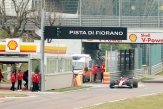
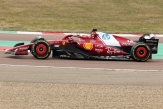
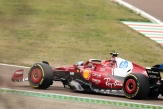
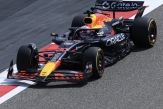
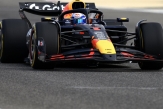
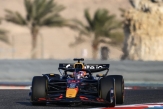

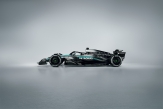
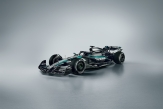
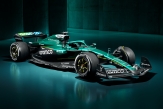
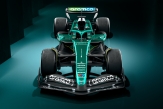
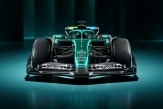
.jpg)
.jpg)
.jpg)

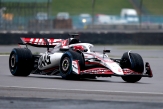

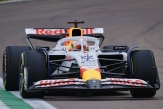
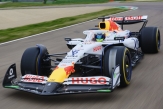
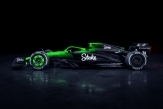
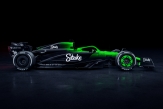

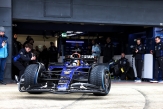
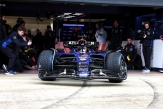
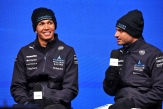

02/12/2025 от Огнян Тенчев (drJeckyll), няма коментари